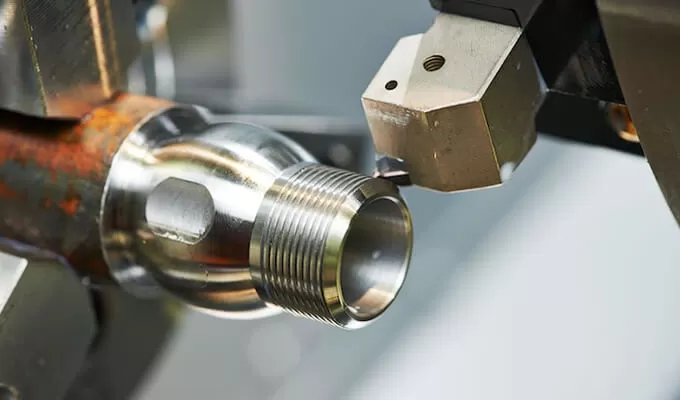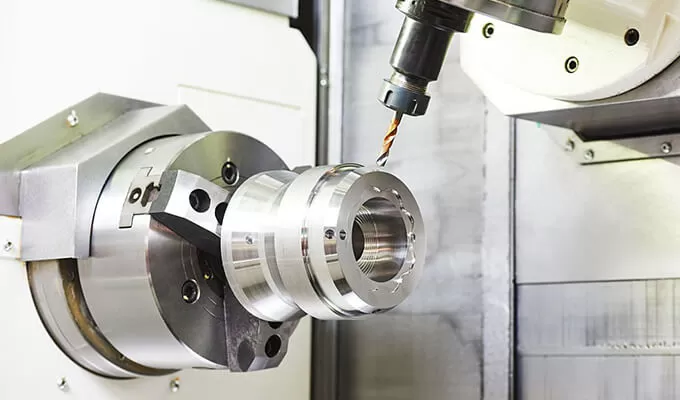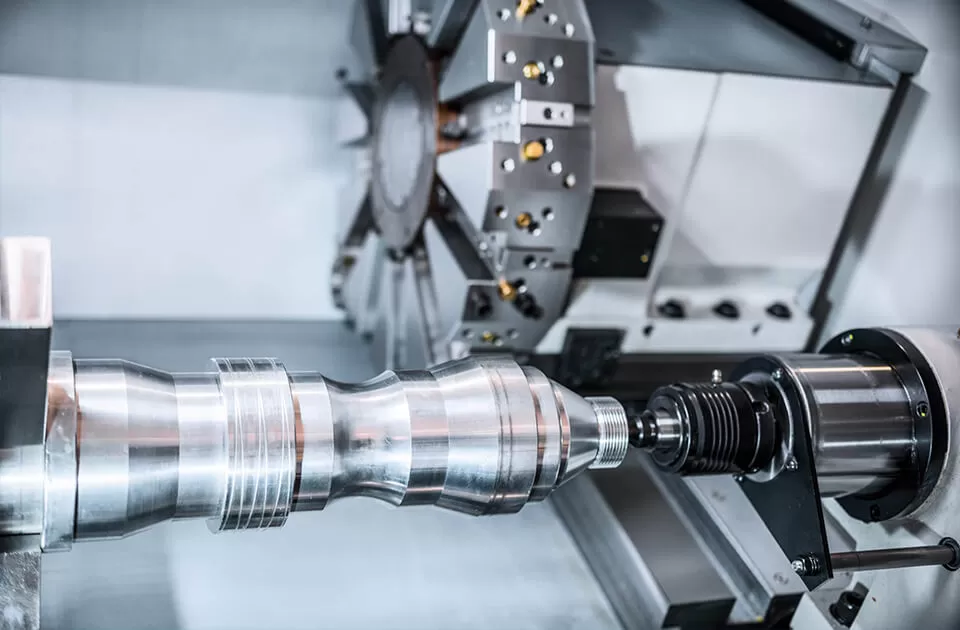
CNC turning is a machining process where bars of material are held in a chuck and rotated while a tool is fed to the piece to remove material to create cylindrical parts. The advantage is the ability to deliver smooth, precise finishes, which reduces the need for subsequent processing. And it can produce various types of axes, bushings, cylinders, rings, washers, or screws. The tolerance can be down to +/- 0.02 mm.

CNC turning milling compound is a machining process that combines the capabilities of a CNC lathe and milling machine to create more complex parts in a single setup. This process is typically used on smaller pieces, such as in the medical and aerospace industries. One of the benefits is reducing the production time and improving the processing accuracy. Another advantage is to shorten the manufacturing process and save cost. The tolerance can be down to +/- 0.005 mm.

From essential components to intricate parts, CNC turning is capable of shaping a broad range of materials to exact specifications. Our CNC turning service can maintain high processing precision and stable processing quality.
The CNC turning machine has 3-5 times higher efficiency than traditional machine tools, and it can efficiently handle small to high volumes, improving the production time. Because the machine tool has a high degree of automation.
Our CNC turning capabilities cover components of various sizes and shapes in a variety of industries. Whether aluminum for aerospace applications or steel for automation parts, these processes offer flexibility and bring challenges and opportunities.
Choose excellent-quality machinery to help with your machining needs, our engineers have rich experience working in the precision engineering industry. Full range of projects from small to large. Tight tolerance down to +/- 0.002 mm. ISO9001:2015 Certified.
Short lead time and proof of certifications and inspection reports with every order. We mind our customers' after-sale service.
Excellent customer service with clear communications and an instant online quote within 24-48 hours.
Cost-competitive in raw material considerations in a tough marketplace. We assist you with the most attractive prices.
| Maximum part size for CNC turning | |
Part size limitations | Metric units |
Maximum part diameter | 520mm |
Maximum part length | 3600mm |
Maximum spindle through-hole | 80mm |
Linear Dimension | ±0.005 mm |
Hole Diameters | ±0.005 mm |
| Shaft Diameters | ±0.005 mm |
Most industries rely heavily on CNC turning
because CNC turning is an important process in the manufacturing sector.
ANOK follows the highest quality standards for your CNC turning projects and all kinds of metals and plastics available for your prototype and mass production.
Our production capabilities in CNC turning include cylinders, hubs, axles, housings, rotary couplings, spindles, and other parts in various industries. Learn more about our CNC turning service and contact us for more information or request a quote for your next CNC turning project.
CNC turning is ideal for producing parts with rotational symmetry, such as shafts, bushings, pulleys, flanges, and other cylindrical components. It can also create complex features like grooves, threads, and tapers on the external or internal surfaces of a workpiece.
The main difference between CNC turning and manual turning is automation. CNC turning uses computer-controlled machines to perform operations with high precision and repeatability, while manual turning requires a machinist to operate the lathe manually. CNC turning is generally faster, more accurate, and better suited for high-volume production.
CNC turning machines are highly accurate, with tolerances typically ranging from ±0.01 mm to ±0.05 mm, depending on the machine and the complexity of the part. This precision makes CNC turning suitable for applications requiring tight tolerances and high-quality finishes.
The two main types of CNC lathes used in CNC turning are 2-axis lathes and multi-axis lathes. 2-axis lathes control the movement of the cutting tool along the X and Z axes, while multi-axis lathes (such as 3-axis or 4-axis lathes) allow for additional movements, such as rotating the tool or the workpiece, enabling the machining of more complex parts.
